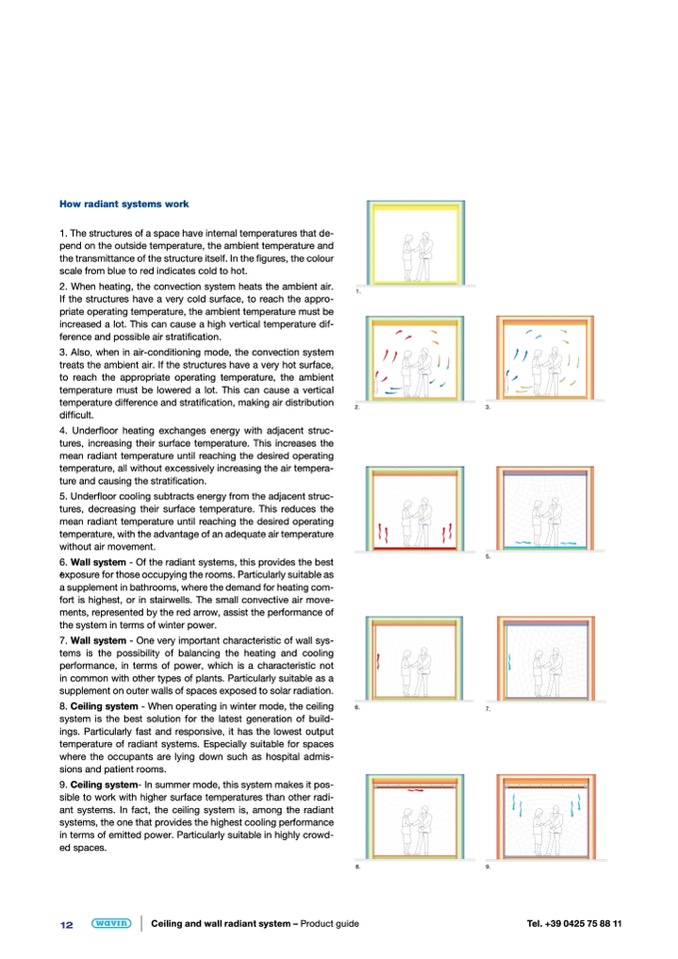
How radiant systems work
1. The structures of a space have internal temperatures that de-
pend on the outside temperature, the ambient temperature and
the transmittance of the structure itself. In the figures, the colour
scale from blue to red indicates cold to hot.
2. When heating, the convection system heats the ambient air.
If the structures have a very cold surface, to reach the appro-
priate operating temperature, the ambient temperature must be
increased a lot. This can cause a high vertical temperature dif-
ference and possible air stratification.
3. Also, when in air-conditioning mode, the convection system
treats the ambient air. If the structures have a very hot surface,
to reach the appropriate operating temperature, the ambient
temperature must be lowered a lot. This can cause a vertical
temperature difference and stratification, making air distribution
difficult.
4. Underfloor heating exchanges energy with adjacent struc-
tures, increasing their surface temperature. This increases the
mean radiant temperature until reaching the desired operating
temperature, all without excessively increasing the air tempera-
ture and causing the stratification.
5. Underfloor cooling subtracts energy from the adjacent struc-
tures, decreasing their surface temperature. This reduces the
mean radiant temperature until reaching the desired operating
temperature, with the advantage of an adequate air temperature
without air movement.
1.
2.
3.
6. Wall system - Of the radiant systems, this provides the best
4.
5.
exposure for those occupying the rooms. Particularly suitable as
a supplement in bathrooms, where the demand for heating com-
fort is highest, or in stairwells. The small convective air move-
ments, represented by the red arrow, assist the performance of
the system in terms of winter power.
7. Wall system - One very important characteristic of wall sys-
tems is the possibility of balancing the heating and cooling
performance, in terms of power, which is a characteristic not
in common with other types of plants. Particularly suitable as a
supplement on outer walls of spaces exposed to solar radiation.
8. Ceiling system - When operating in winter mode, the ceiling
6.
7.
system is the best solution for the latest generation of build-
ings. Particularly fast and responsive, it has the lowest output
temperature of radiant systems. Especially suitable for spaces
where the occupants are lying down such as hospital admis-
sions and patient rooms.
9. Ceiling system- In summer mode, this system makes it pos-
sible to work with higher surface temperatures than other radi-
ant systems. In fact, the ceiling system is, among the radiant
systems, the one that provides the highest cooling performance
in terms of emitted power. Particularly suitable in highly crowd-
ed spaces.
12
Ceiling and wall radiant system – Product guide
Tel. +39 0425 75 88 11
8.
9.


